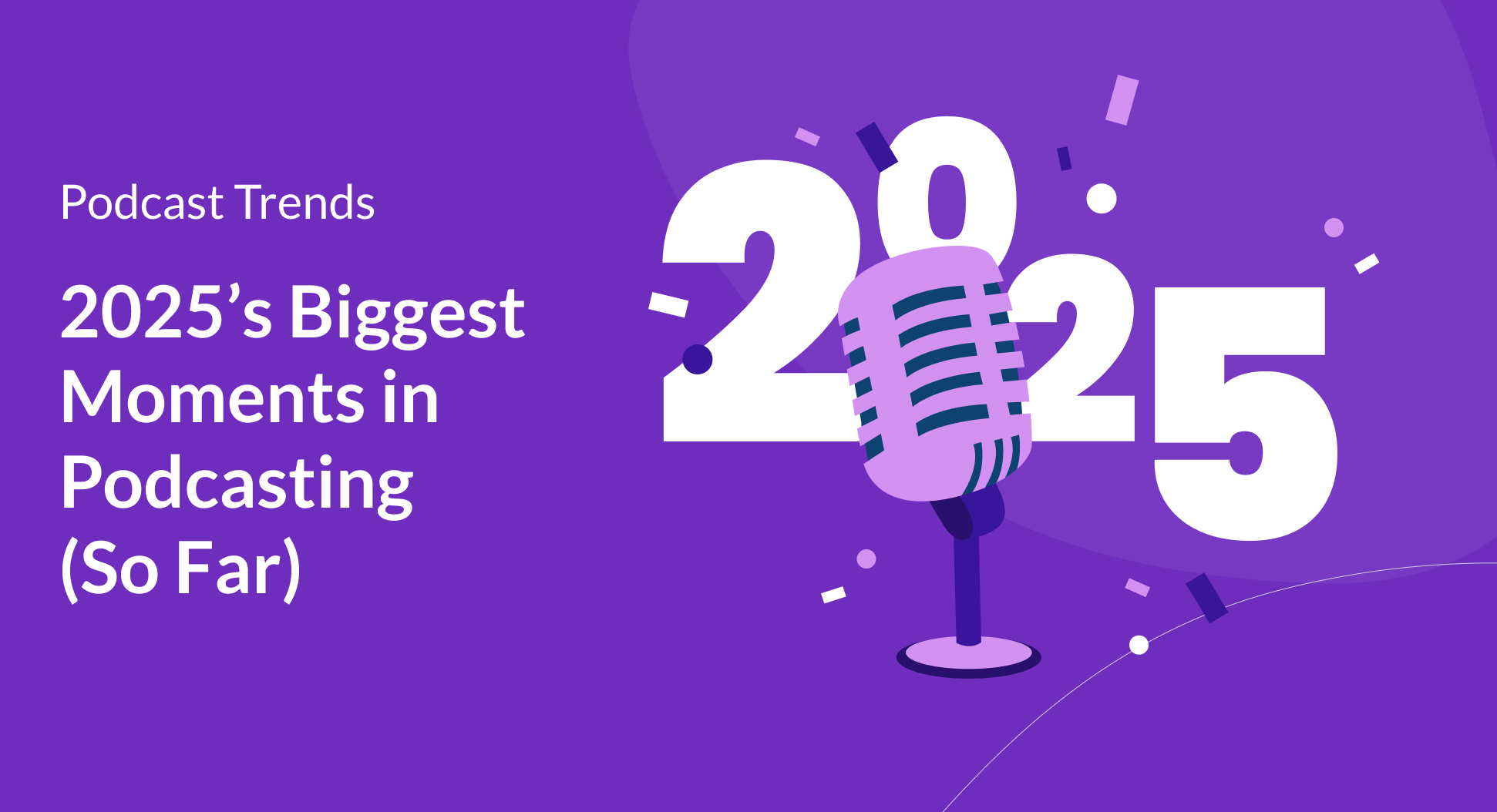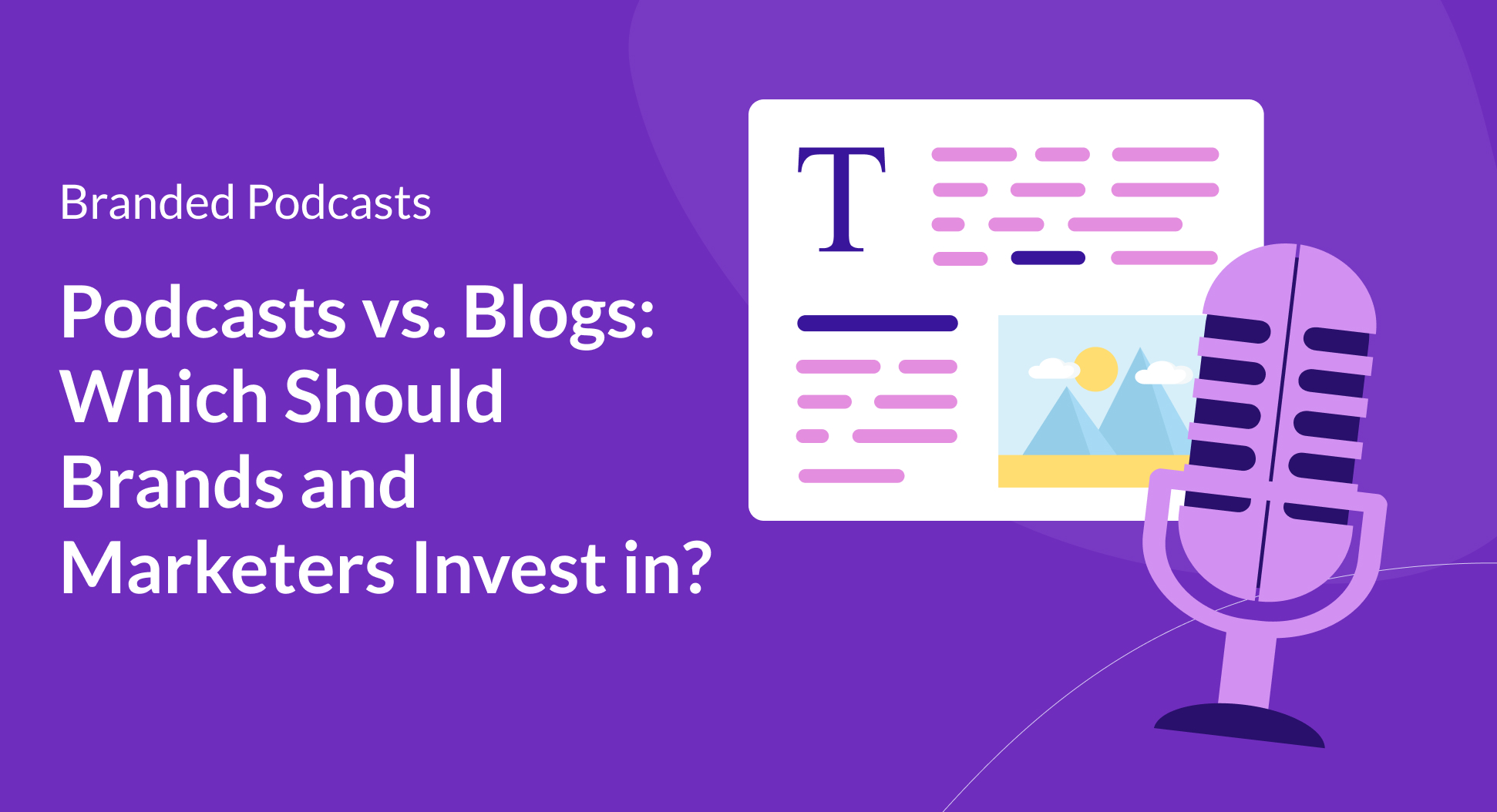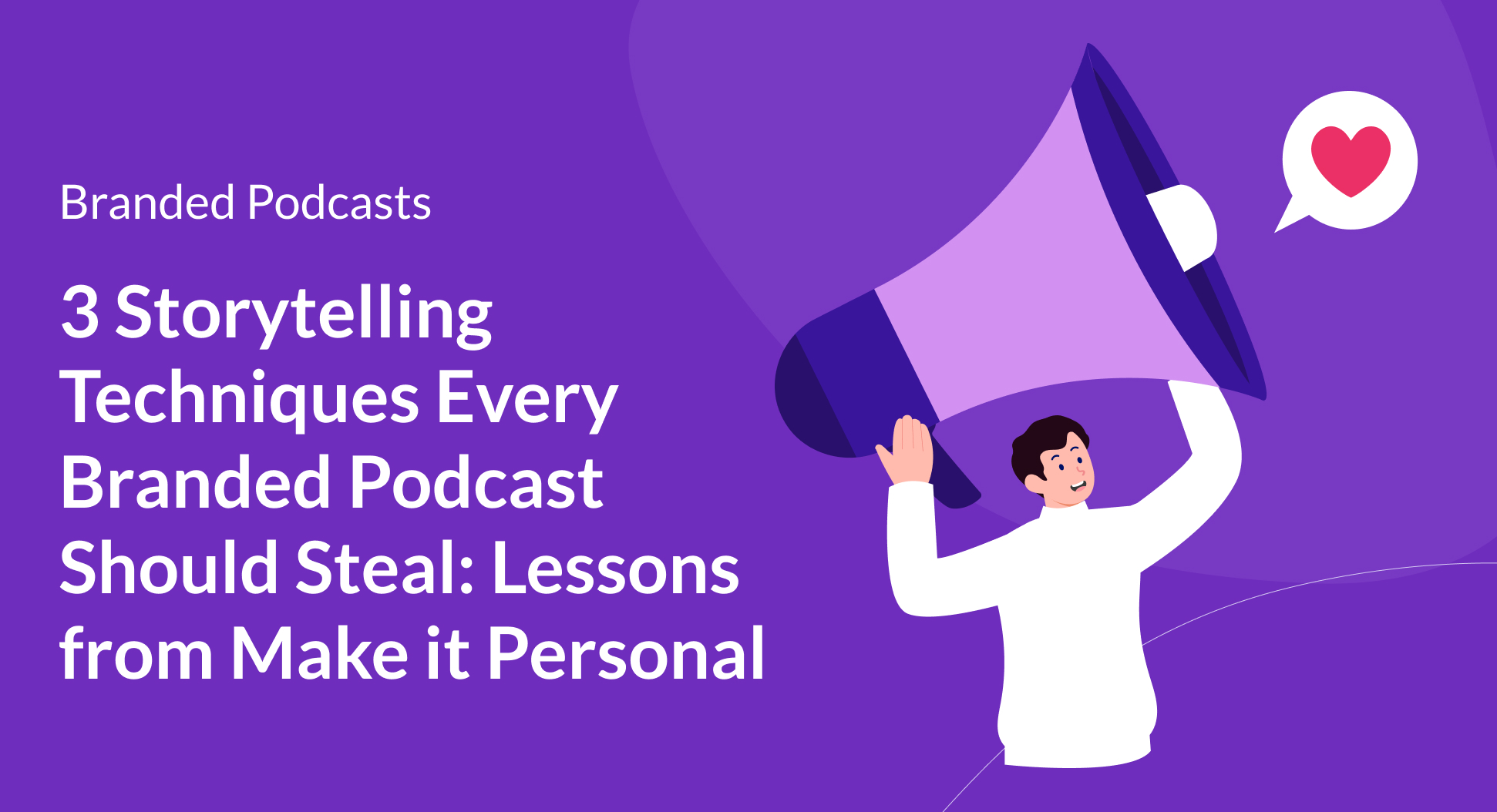Contents
Video has been taking the podcasting world by storm, and many brands are pivoting to include video content in their podcasting strategies. Like with most new mediums, there is still confusion surrounding measuring the success of video podcasting.
As the biggest platform for video uploading and viewing, YouTube has unsurprisingly become a popular place to upload your podcast, with 78% of American podcast listeners using YouTube to consume shows.
Not only are you giving your existing listeners a new way to consume your content, but you’re also reaching a whole new pool of listeners who aren’t on podcast listening apps. While exciting, YouTube can feel like the wild west if you aren’t familiar with the site and its analytics.
Luckily, as an established platform, YouTube has a robust analytics system for its users. With that in mind, here is your guide to using YouTube analytics to measure your branded podcast.
Basic analytics breakdown
Let's break down the basics of YouTube analytics and how to navigate them. Unsurprisingly, while analytics on listening apps are grounded in listens and downloads, YouTube analytics are based on views and subscribers.
It doesn't stop there though. Like with listening apps, YouTube allows you to measure demographics, viewing times, views per subscriber, and various ways to measure reach, like click-through rate and unique viewers.
How you choose to use these analytics should be similar to the strategy you employ when measuring data from your listening apps. Ask yourself the same questions you would when looking over podcast analytics: Are you reaching your target listener? (or in this case viewer), does a particular type of content perform better? The same questions and conclusions you draw from your podcast listening analytics you can also measure through YouTube.
As with listens and downloads, it's important not to get caught up on views alone. Just because someone is watching your video doesn’t necessarily mean they’re genuinely interested. You could have 10 thousand views, but if you only gained 10 subscribers from that content, were you really successful? Spreading brand awareness is about far more than simply eyes on your content.
Quick Tip: If you find that your viewers seem random or completely different than expected, take notice of the titles you are giving your videos. Unlike listening apps, YouTube automatically pushes content they think a viewer will like based on their watch history.
Suppose your video titles or thumbnails (the picture that is displayed when your video appears in a search) is different from the actual content in the video. In that case, it may end up being suggested to people who ultimately aren't interested. Try A/B testing video titles and thumbnails to see which ones are more effective at reaching your target audience.
Reporting on YouTube Analytics
Now that you have a basic understanding of YouTube analytics, what metrics should you focus on and what can they tell you about your podcast? Here are a few analytics to pay special attention to:
- Average View Duration: Much like listening time, average view duration lets you know if your audience is actually consuming your content or just clicking through. Elements like a strong hook and various calls to action are great ways to keep listeners and viewers engaged.
- Audience Retention: One of YouTube’s best analytics is its ability to measure audience retention. This metric shows you exactly how many people leave at each moment of your video which can inform your strategy for your next episode. Videos with higher retention rates fare better on YouTube's algorithm and are pushed to more people.
- Rewatches: YouTube can show you the most rewatched parts of your videos. This allows you to measure what pieces of content viewers found the most engaging (or the most confusing)
- Card Clicks: Cards are the embedded links that appear throughout YouTube videos that take viewers off the video to another window. If you mention your Instagram, a product, or another video you can create a card that appears during the time you are talking about it so viewers can click directly off the video.
This is also a great chance to see if certain campaigns are more successful on one of the formats. Maybe directing your audience to your Instagram is more successful on YouTube because you are able to include a photo of your page in the video you won’t know unless you track it!
Make comparisons between audio-only and video content
One of the biggest advantages of video podcasting, other than your increased reach, is your ability to compare your YouTube analytics with the analytics you gather from listening apps. Your target listener and viewer may be slightly different given the overall demographics on each platform, but they should certainly be in the same ballpark.
There is a wealth of helpful information you can pull from these comparisons. Is the content that performs on both mediums the same, or slightly different? Does one medium bring in more leads than the other?
When it comes to comparing your audiences’ however, it can be a double-edged sword. It’s great if you're reaching new people with your channel, but if your audiences are completely different on each platform you’re going to eventually run into issues. This is why you need to set viewer personas in advance and keep them similar to your listener persons, especially when it comes to their wants and needs.
Think about it this way: If your audiences want different things from your content, one of them will inevitably be disappointed and your success in both mediums will drop. Using YouTube is not about reaching more of everyone, it’s about reaching more of your target audience who might not be traditional podcast listeners.
Video and audio should work with and not against each other
While video podcasting is certainly not going away, you can’t lose focus of the fact that ultimately your show is a podcast. If you begin to create content only so that it will perform well on YouTube, your original and loyal audience on listening apps will notice. Striking a balance between the two can be difficult, but audio and video podcasts should work with and not against each other.
Employing an omnichannel marketing strategy and allowing the two mediums to work alongside each other is the path to success. If your YouTube audience is unhappy with the podcast format, then ultimately these aren’t the people you’re trying to reach. You are creating a podcast, and pivoting away from that will lose your audience on listening apps.
YouTube analytics for branded podcasts
Video podcasting is not going away, and the medium will continue to evolve as the popularity of podcasting only continues to increase. Making sure you understand your goals on YouTube and how to use the platform's analytics in tandem with the data you already gather from listening apps will be paramount as the space continues to grow.


.avif)






.png)

.png)




.png)
.png)
.png)
.png)